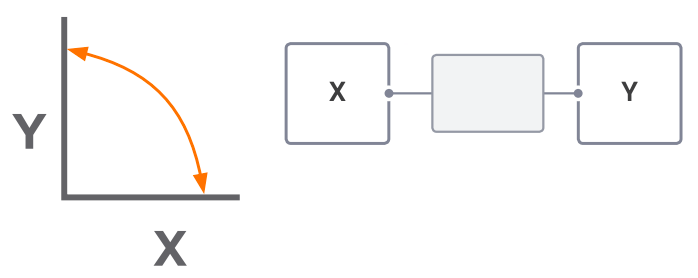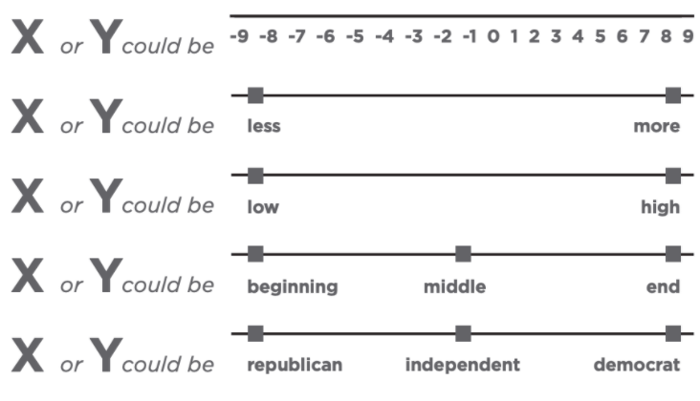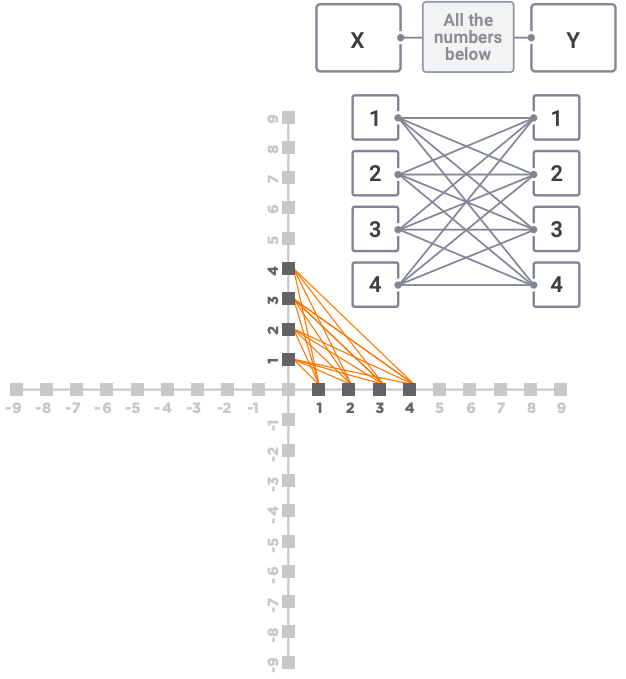Jig: XY Graph
 Derek & Laura Cabrera
·
1 minute read
Derek & Laura Cabrera
·
1 minute read
Excerpt from the book: Systems Thinking Made Simple, Chapter 8
This blog is part of a set of blogs under the tag "cognitive jigs." Be sure to check out the tag to read them as a group and learn how cognitive jigs are at play in our everyday lives.
Graphs are immensely useful in every discipline of knowledge. Understanding DSRP not only reveals the implicit structure of graphs but also allows us to
extend graphs and to make them better. Figure 8.1 illustrates that every XY graph is a relationship between two systems (the system of X and the system of Y).

Figure 8.2 shows that X and Y are also systems made up of parts (e.g., the numbers on their axis), each of which are individual distinctions.

By combining the points illustrated in Figures 8.1 and 8.2, Figure 8.3 shows something surprising: every graph is actually an R-Channel (see Chapter 5). R-Channels are common cognitive jigs where the parts of two systems are being related. In addition, all graphs also have a root perspective and many graphs could benefit from using various perspectives to analyze them further.

 Plectica
Plectica

.png?width=150&height=150&name=CRL%20GOAT%20Logo%20(4).png)


